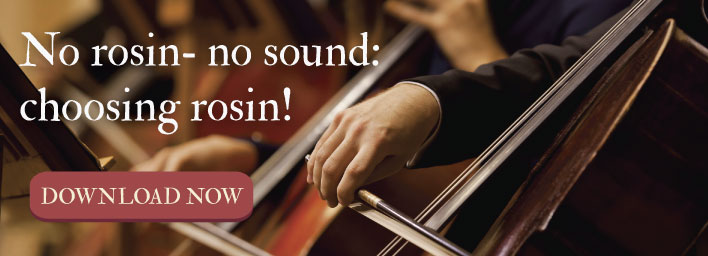Adjusting Violin Bow Hair - How Tight Is Too Tight?

Adjusting violin bow hair
Getting the best, richest sounds from your violin depends on a number of factors. And, if you’re a beginner, one of the challenges to getting your best sound involves learning to properly adjust violin bow tension. That means that the looseness or tightness of the bowhair can make a big impact on not only how you sound, but how easy it is to play and practice.
You violin bow must be adjusted every time you play. But, like all things, it gets easier the more you practice. Two good rhyming tips to remember are: "lefty loosey, right tighty" and: "tighten for playing, loosen for staying." You must tighten the bow (add tension) to play, but when you’re finished, you should loosen the bow's hair (remove the tension) before you put it away. This is critical for keeping your bow in its best condition. If you don’t release the tension on the bow after each performance or practice, the stress can eventually warp it, or even break off the head of the bow!
How Tight Should Your Bow Be?
One of the most common questions new players have about adjusting their bows is, "How tight is too tight?" There's a tendency for new students to be a little overzealous and apply far too much tension on the bow. Remember that your violin bow is fragile. Making your bow too tight can cause lots of problems such as:
- It will be harder to control (especially as you expand your skills beyond the basic up-and-down bow strokes).
- Too much tension can snap the head right off.
- It causes over-stretching of the bow hair (which means you'll have to re-hair your bow more often, and it may eventually warp its camber).
- Constant overtightening can strip the eyelet contained in the frog. Once that happens, you'll need a replacement eyelet right away (a relatively inexpensive fix), because you can't play well with a worn or stripped one.
Rules for Tightening Your Bow
Turn the adjustment button right to tighten the bow hair, left to loosen it.
When you adjust your violin bow each time you play or practice, there are a few tricks you can use to learn the right “touch.” Many teachers will tell you that a pencil is a handy thing to use to gauge exactly the right level of tension.
- Place the end of a standard pencil between the bow hair and stick, at the bow's center. Tighten until you feel the pencil fit within the space. Look to see if the strands and the stick are both slightly touching the pencil.
- Until you get more familiar with this technique, keep a short golf pencil in plain sight in your violin case. It can help remind you to loosen your bow before putting it away.
Knowing You’ve Got It Right!
You can tell if you’ve adjusted your violin bow correctly by looking at it. The bow hair will be closer to the stick at the center of the bow, and slightly further from it at the head and frog end of the bow.
Your violin bow will perform better and its hair will last longer when you follow basic care techniques. But, when you need to have your bow re-haired, don't delay. Visit your professional luthier as soon as you can. Uneven tension along the hairs can warp your bow's camber. Re-hairing is cheaper than buying a new bow. Fixing a warped camber means your luthier has to heat and re-shape the bow carefully — an expensive, time-consuming, and labor-intensive process.
By taking care to adjust the tension of your bow every time you play, you can make sure that you're playing your best, and that your bow will last. Learn more about taking care of your instrument.


